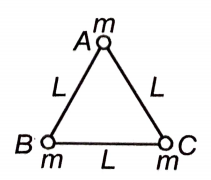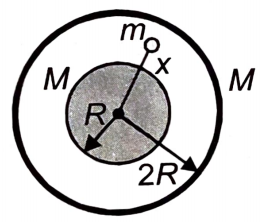The minimum and maximum distances of a planet revolving around the sun are \(r\) and \(R.\) If the minimum speed of the planet on its trajectory is \(v_0,\) its maximum speed will be:
1.
\(\dfrac{v_0R}{r}\)
2.
\(\dfrac{v_0r}{R}\)
3.
\(\dfrac{v_0R^2}{r^2}\)
4.
\(\dfrac{v_0r^2}{R^2}\)
The torque on a planet about the centre of the sun is:
1. zero.
2. negative.
3. positive.
4. dependent on the mass of the planet.
During the motion of a planet from perihelion to aphelion, the work done by the gravitational force of the sun on it is:
1. zero.
2. negative.
3. positive.
4. may be positive or negative.
The time period of a satellite in a circular orbit of radius R is T. The period of another satellite in a circular orbit of radius 4R is:
1. 4T
2.
3. 8T
4.
Gravitation is the phenomenon of interaction between:
1. Point masses only
2. Any arbitrarily shaped masses
3. Planets only
4. None of these
The Force of gravitation between two masses is found to be F in a vacuum. If both the masses are dipped in water at the same distance, then the new force will be:
1. >F
2. <F
3. F
4. Cannot say
Two-point masses m and 4m are separated by a distance d on a line. A third point mass m0 is to be placed at a point on the line such that the net gravitational force on it is equal to zero.

The distance of that point from the mass m is:
1.
2.
3.
4.
Three particles A, B and C, each of mass m are lying at the corners of an equilateral triangle of side L. If particle A is released keeping the particles B and C fixed, the magnitude of the instantaneous acceleration of A is:

1.
2.
3.
4.
A uniform sphere of mass M and radius R is surrounded by a concentric spherical shell of the same mass but radius 2R. A point mass m is kept at a distance x (>R) in the region bounded by the spheres as shown in the figure. The net gravitational force on that particle is:

1.
2.
3.
4. Zero
The gravitational constant depends upon:
1. Size of the bodies
2. Gravitational masses
3. Distance between the bodies
4. None of these






